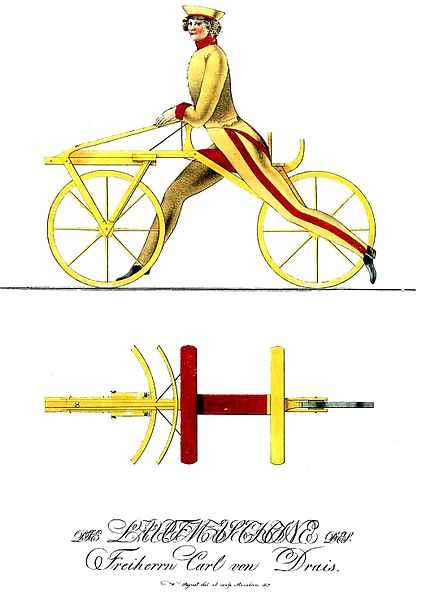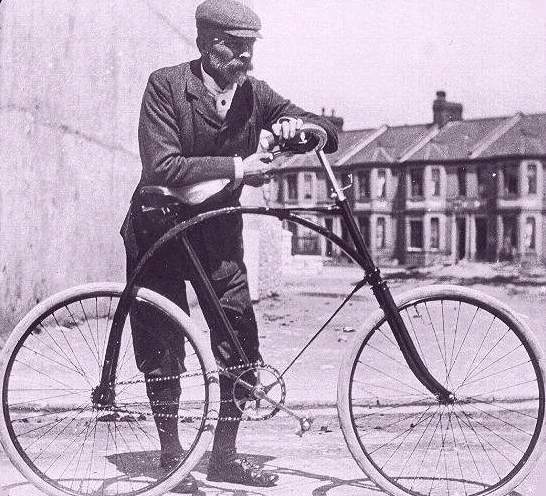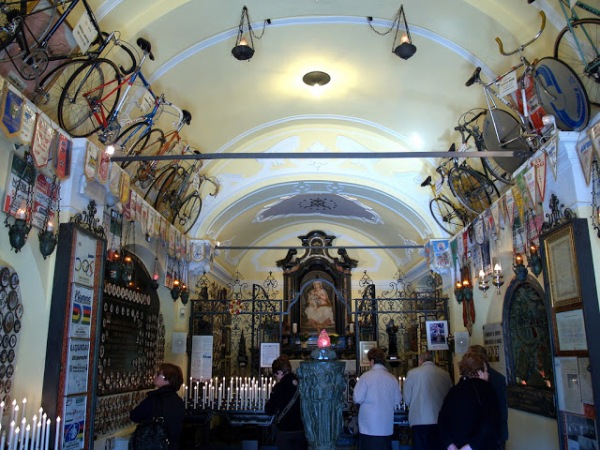Riding the wave
In the wake of Lance Armstrong’s admission to using illegal means to further his cycling career, I thought it would be useful to take a look at the history of cycling, surely one of the unsung histories of transportation.
It all started in 1816 with a crop failure in Germany (well, what is now Germany) which meant that horses were dying. At that time, of course, horses were the main form of transport, and Baron Carl von Drais, a civil servant found himself being unable to perform his duties. In 1817 he came up with what he called the Laufmaschine (running machine) and here it is. Going up hill must have been hard work.
In the following years many tried to improve on Drais’s design, particularly in France and England, where for some reason they were very popular with London’s dandies who wore out their boots very quickly and were fined for riding on the pavements. A forerunner to hipsters on their fixies, no doubt.
A number of improvements were made on this design, including adding pedals to the front wheel which made it feel a bit like a bicycle at least, though these were clearly an uncomfortable ride as they were dubbed boneshakers. It wasn’t until the 1870s when development gathered pace and the penny farthing was unleashed on an unsuspecting world. With such a design it didn’t go down too well with polite ladies in society and it was mostly left to young men to break their wrists as they fell from their trusty steeds with new-found speed. These are still ridden and raced today, as the clip below details, though I must confess as someone who cycles daily, that I don’t really fancy navigating Kingsland Road at rush hour on one of these.
By 1890 John Kemp Starley had invented what became known as the safety bicycle (so-called because it had a steerable front wheel and a drive chain connected to pedals) which was complemented by Dunlop’s invention of the pneumatic tire. The bicycle as we know it had been born. Look at this beauty, and I mean the bicycle and not the beard/moustache combo.
Since then, the bicycle has developed its own rich cultural history, particularly in the Midlands where it has a pre-eminent industrial history, but it also reflects some major changes in economics and politics across the world. Cycling always makes a comeback during times of economic recession, but it is also a symbol of democracy and individuality.
In the Netherlands, some 60% of all local trips are now made on a bike, a feat that would not have been possible without a series of protest bike rides in the 1970s which challenged transport and town planning policies that favoured cars in the post war period, but also responded to oil price rises that crippled western economies. This curious video from the Dutch Cycling Embassy explains more in detail and gives you a sense of democracy in action. Britain’s response, of course, was to build Milton Keynes, get rid of trams, watch the traffic jams build up, and then introduce the congestion charge. Despite Britain’s dominance of cycling at the London Olympics, cycling is stil not part of national transport planning in Britain.
There is now a healthy cycling culture across the world and many subcultures abound, the most notable of which is the bike courier. This documentary from the early 90s gives some insight into the characters and culture of courier cycling in NYC. There’s a whole host of characters, including the one-legged courier, the missionary courier, and the homeless courier, all of whom are addicted to riding. The response of taxi drivers is more than a little worrying.
Cycling also has its own patron saint, the Madonna del Ghisallo, in Italy. Tradition is that in medieval times Count Ghisallo was attacked by bandits and was saved when he saw an apparition of the Virgin Mary, and he escaped peril by running towards this vision. The Madonna del Ghisallo became the patroness of travellers, but in 1949 a local priest persuaded Pope Pius XII to admit the Madonna as the patroness of cyclists. The chapel was included on various significant races has since become both shrine and memorial to a range of cycling legends, both alive and dead.
I previously alluded to another cycling subculture, hipsters, who have a penchant for riding fixed gear bikes with no brakes, or fixies (they’re rarely fixed gear, they’re mostly single speed with brakes). These urban types, like most subcultures, declare their independence from the tyranny of the modern world, but by subscribing to their own set of rules fall into its same trappings. In biking terms, the new phenomenon is the designer fixie where you take what is essentially the same bike frame but change the colours, handlebars, seat, wheels, etc. If you’re interested you can buy one here, here, here, here and here. Cycling has become the new way to declare your independence, not only by the freedom the bike gives you, but by what you ride… as long as your bike falls into certain accepted categories of course. What would John Kemp Starley make of it all?



A charming read, although I would think a meandering ride away from its tags…